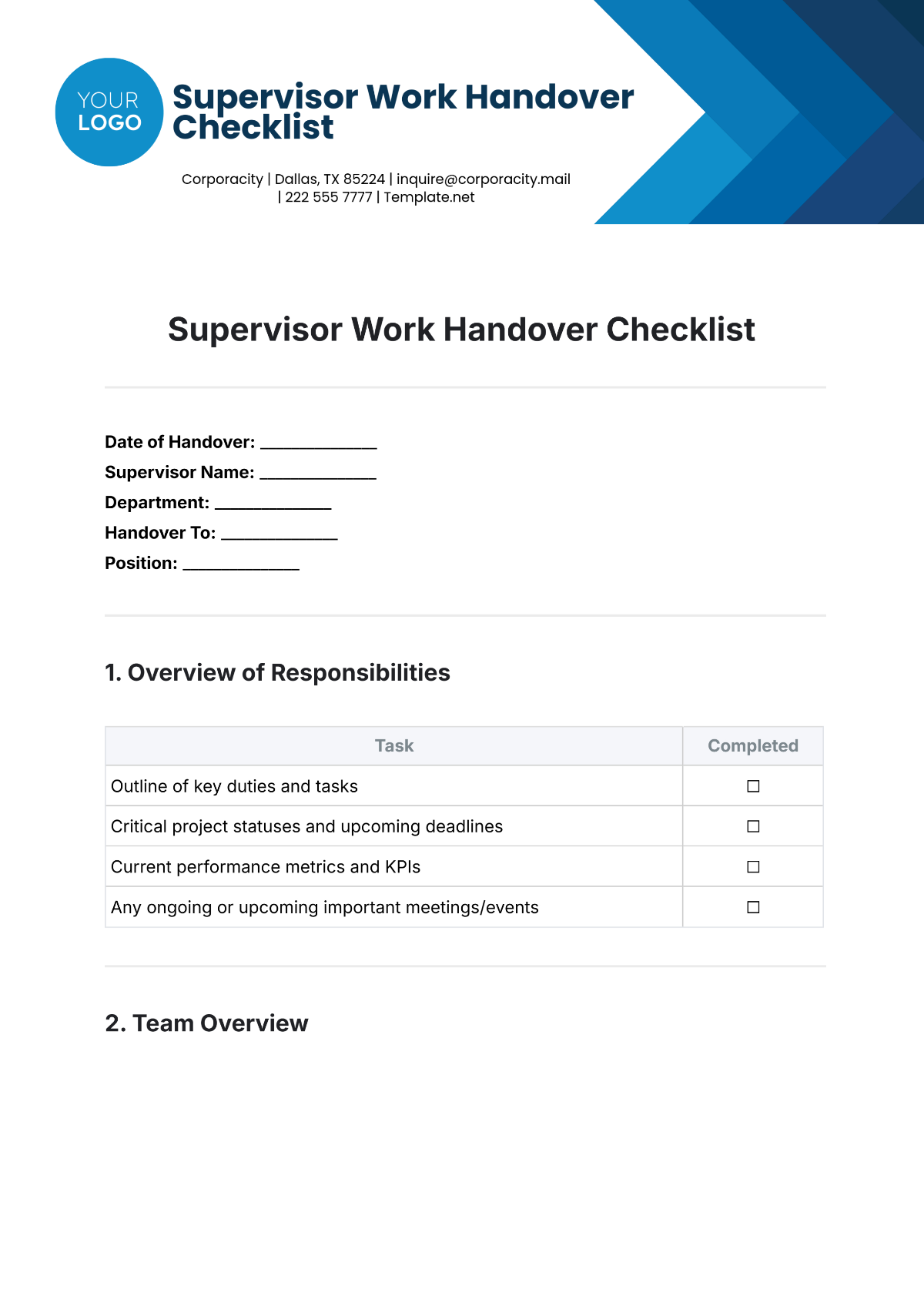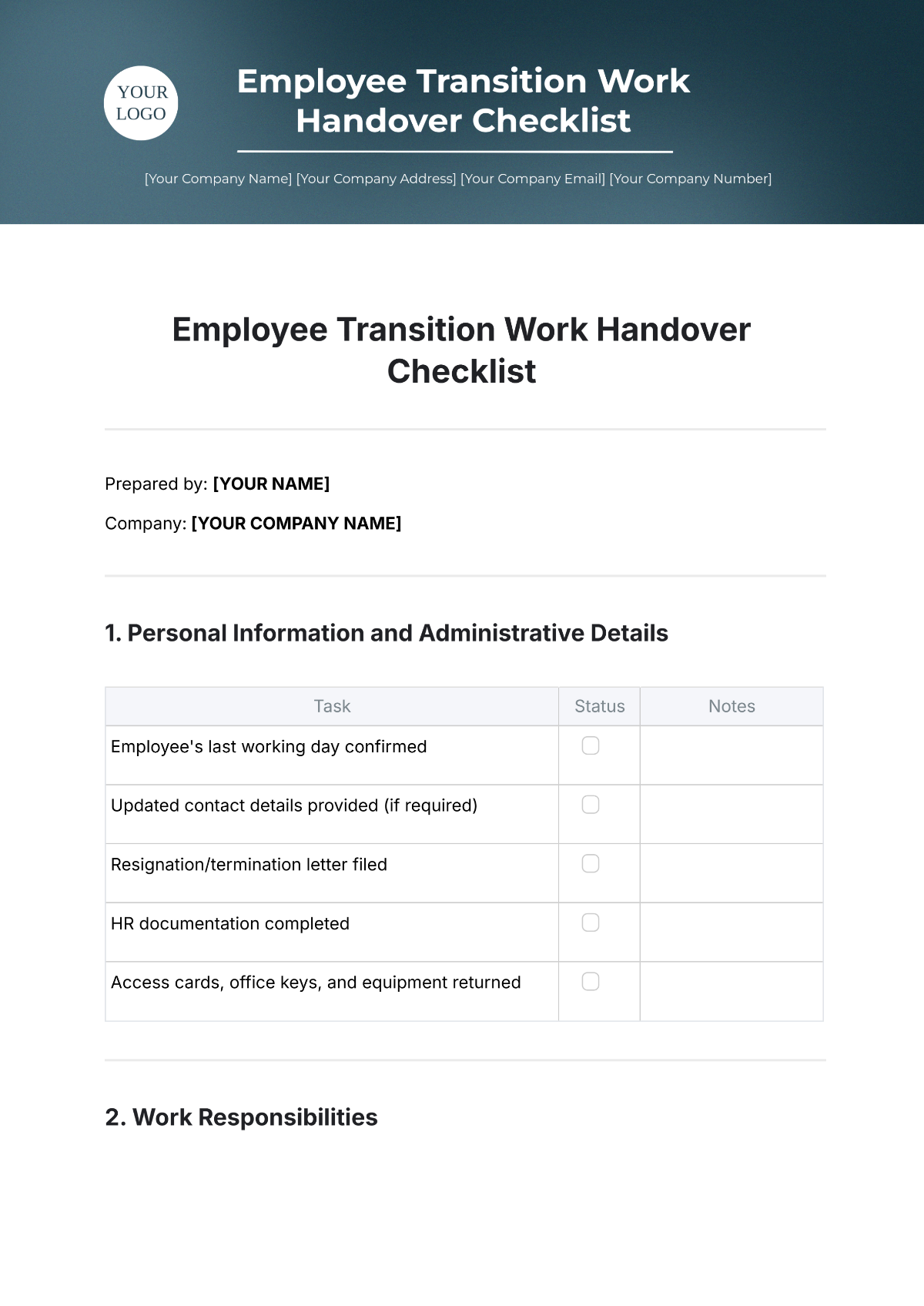Free Handover Protocol Template
Handover Protocol
Prepared By: | [YOUR NAME] |
Company Name: | [YOUR COMPANY] |
Department: | [YOUR DEPARTMENT] |
Date: | [DATE] |
I. Objectives
This protocol aims to establish a systematic and seamless approach to the transfer of responsibilities, tasks, or pertinent information from one individual or team in the organization [YOUR DEPARTMENT] to other respective individuals or teams. This process aims to ensure continuity of work, mitigate possible risks, and eliminate any potential gaps in the operational efficiency of [YOUR COMPANY NAME].
Secondly, this protocol also lays out key principles, rules, and expectations that both the outgoing and incoming entities should adhere to during the transition phase, aiming to create a harmonious transition environment without disagreements and conflicts.
II. Protocol Overview
The protocol aims at creating a detailed handover plan where the [YOUR DEPARTMENT] will transfer all tasks, responsibilities, and relevant information to the incoming team. This procedure will involve both teams, key stakeholders, and senior management.
Given the centrality of these tasks in the day-to-day operations of [YOUR COMPANY NAME], the incoming team will be provided with sufficient time and training to understand their new role before completing the handover.
III. Materials and Equipment
Handover Document Templates: Standardized templates for documenting tasks, responsibilities, and pending items are essential for ensuring consistency and clarity in the handover process.
Secure File Storage: A secure storage system, whether digital or physical, is crucial for storing and transferring important documents and files securely, safeguarding sensitive information during the transition.
Communication Channels: Effective communication platforms such as email, instant messaging, or project management tools are necessary for facilitating ongoing communication between outgoing and incoming teams, ensuring coordination and collaboration throughout the handover process.
Encryption Software: Tools for encrypting sensitive data and information are essential for ensuring confidentiality during the transfer of critical information, protecting it from unauthorized access or interception.
Training Materials: Comprehensive training materials including presentations, manuals, or guides are vital for providing the incoming team with the necessary knowledge and skills to understand their new roles and responsibilities, ensuring a smooth transition and minimizing disruption to operations.
IV. Procedure
Conduct an initial meeting between the [YOUR DEPARTMENT] and the incoming team.
Prepare a detailed handover document highlighting tasks, responsibilities, and pending items.
Arrange a series of training sessions for the incoming team on their new tasks and responsibilities.
V. Data Collection
The process of data collection involves identifying, storing, and transferring important documents, digital files, or other relevant materials from the Operations Department to the incoming team.
The process will follow the data collection and sharing laws in accordance with the policies set by [YOUR COMPANY NAME].
VI. Safety Considerations
The safety of the information being transferred is paramount. Therefore, all data and information shared during the transition phase will be securely encrypted and transferred via safe channels.
Only authorized personnel from the incoming team will have access to this crucial information, ensuring confidentiality and integrity.
VII. Expected Results
The expected result from the handover process is a seamless transition from the Operations Department to the incoming team without disrupting the operational flow of [YOUR COMPANY NAME].
The incoming team should be fully equipped and prepared to handle their new roles efficiently, reducing any potential risks or operational gaps.
VIII. Conclusion
Overall, this transfer of responsibilities protocol ensures that there is a well-documented procedure to handle transitions within [YOUR COMPANY NAME] in a secure and efficient manner.
By adhering to this protocol, we ensure a smooth transition between teams, minimizing any potential negative impacts on operations at [YOUR COMPANY NAME].

















































